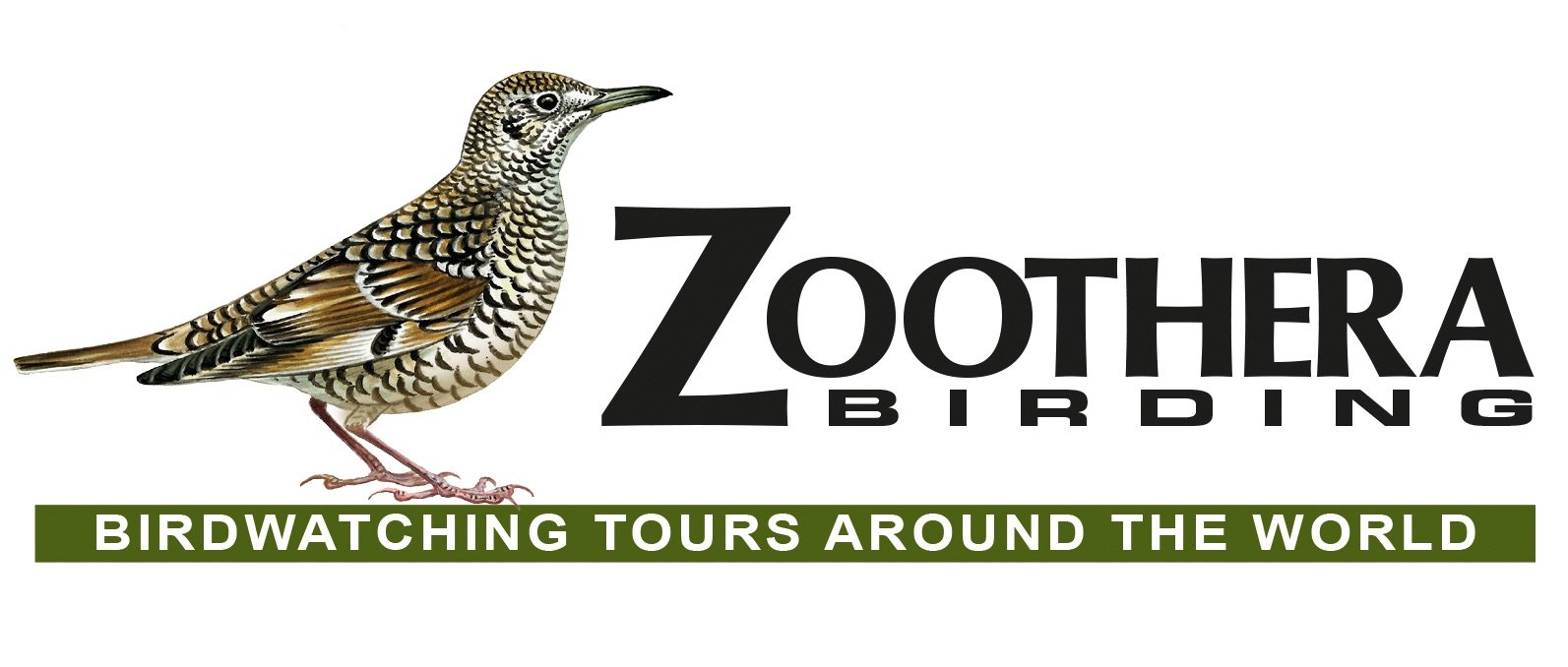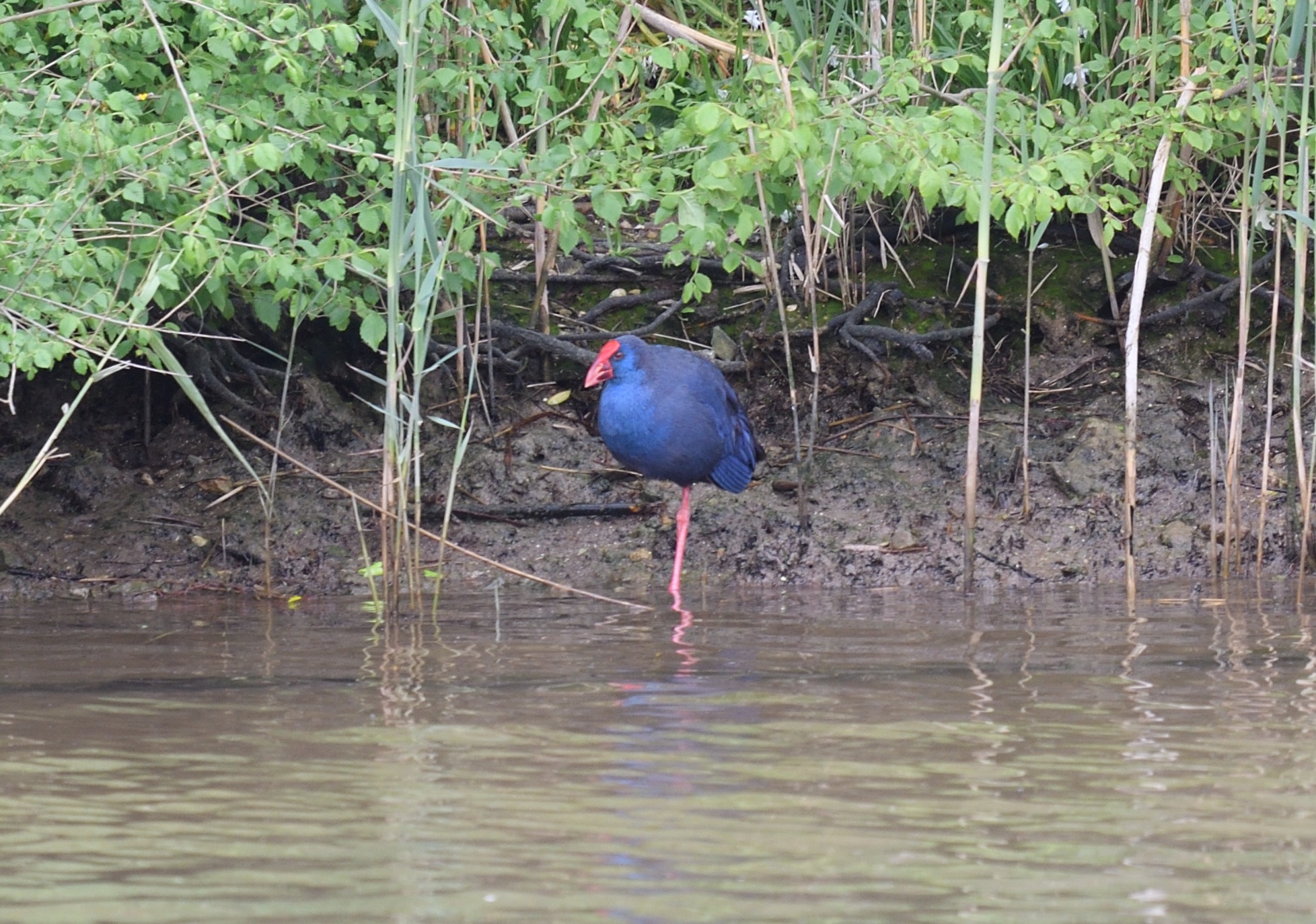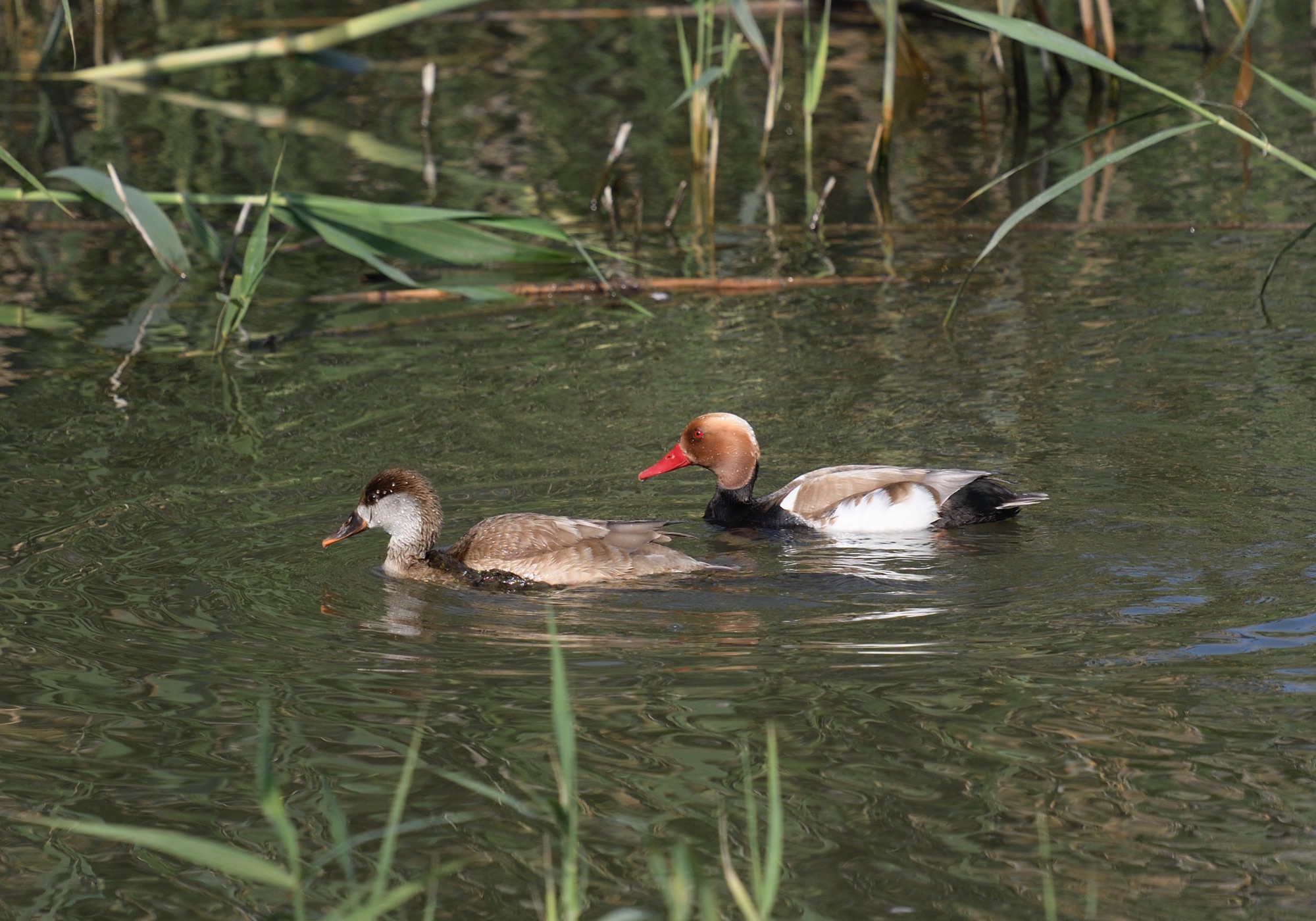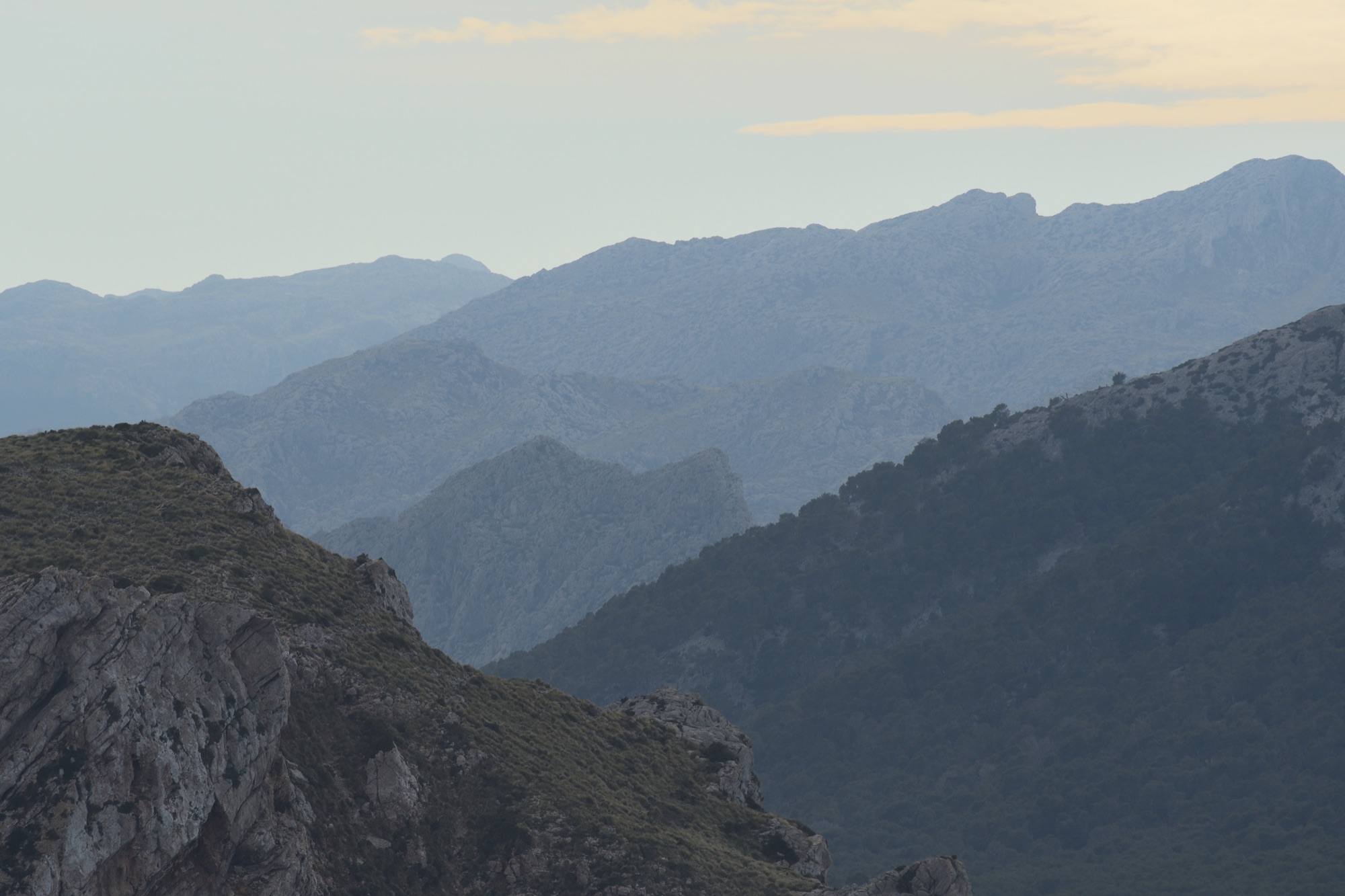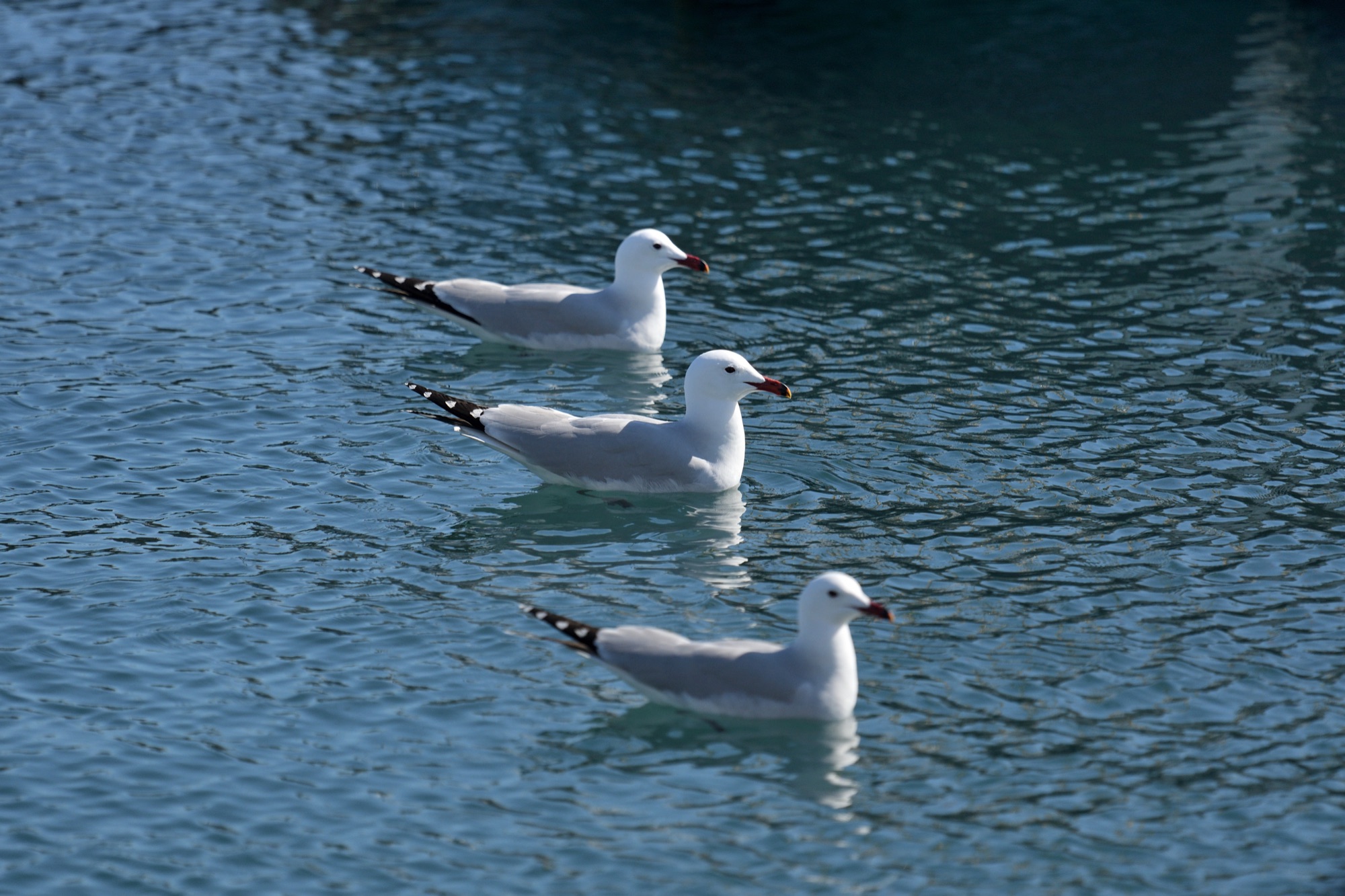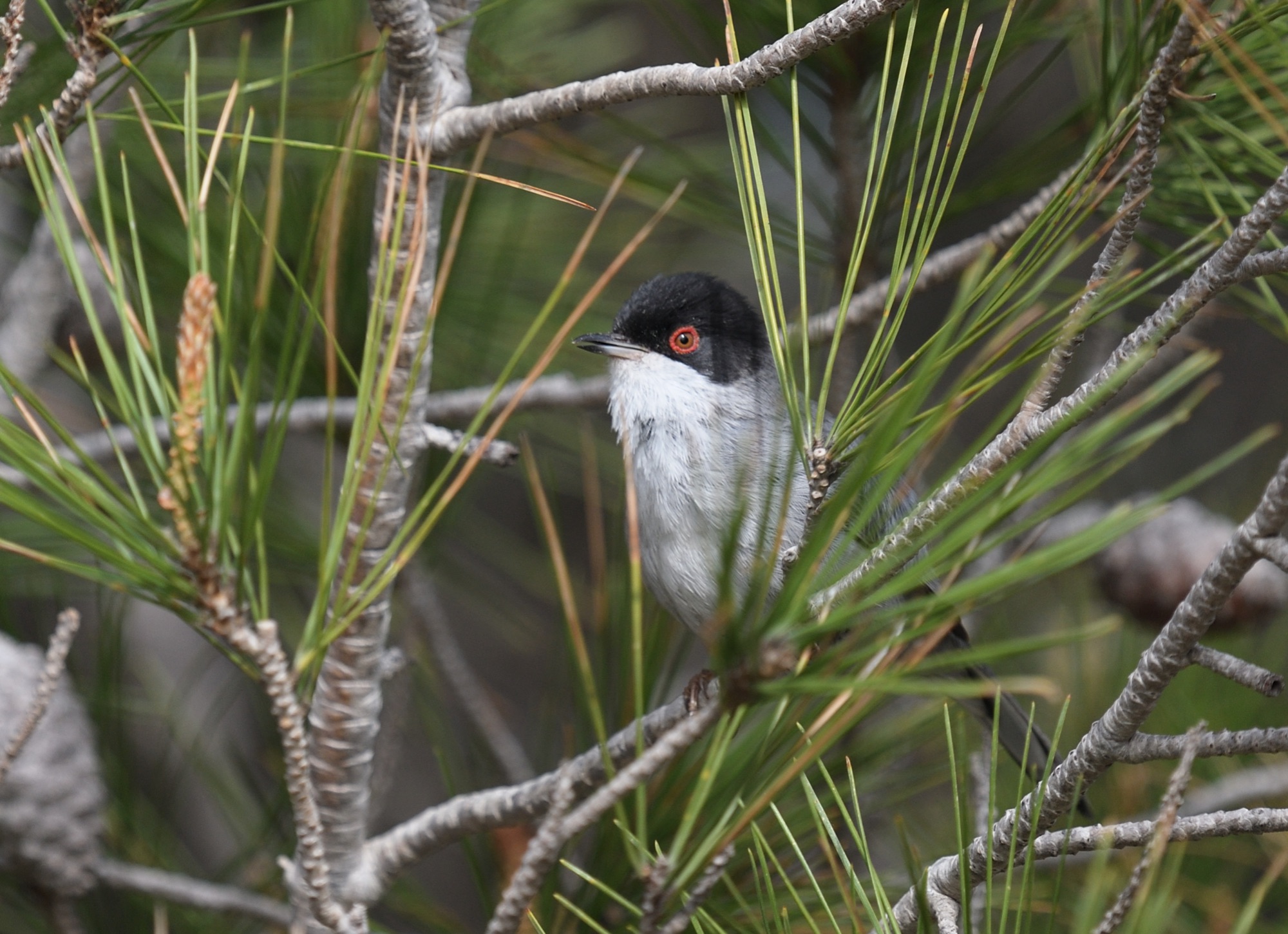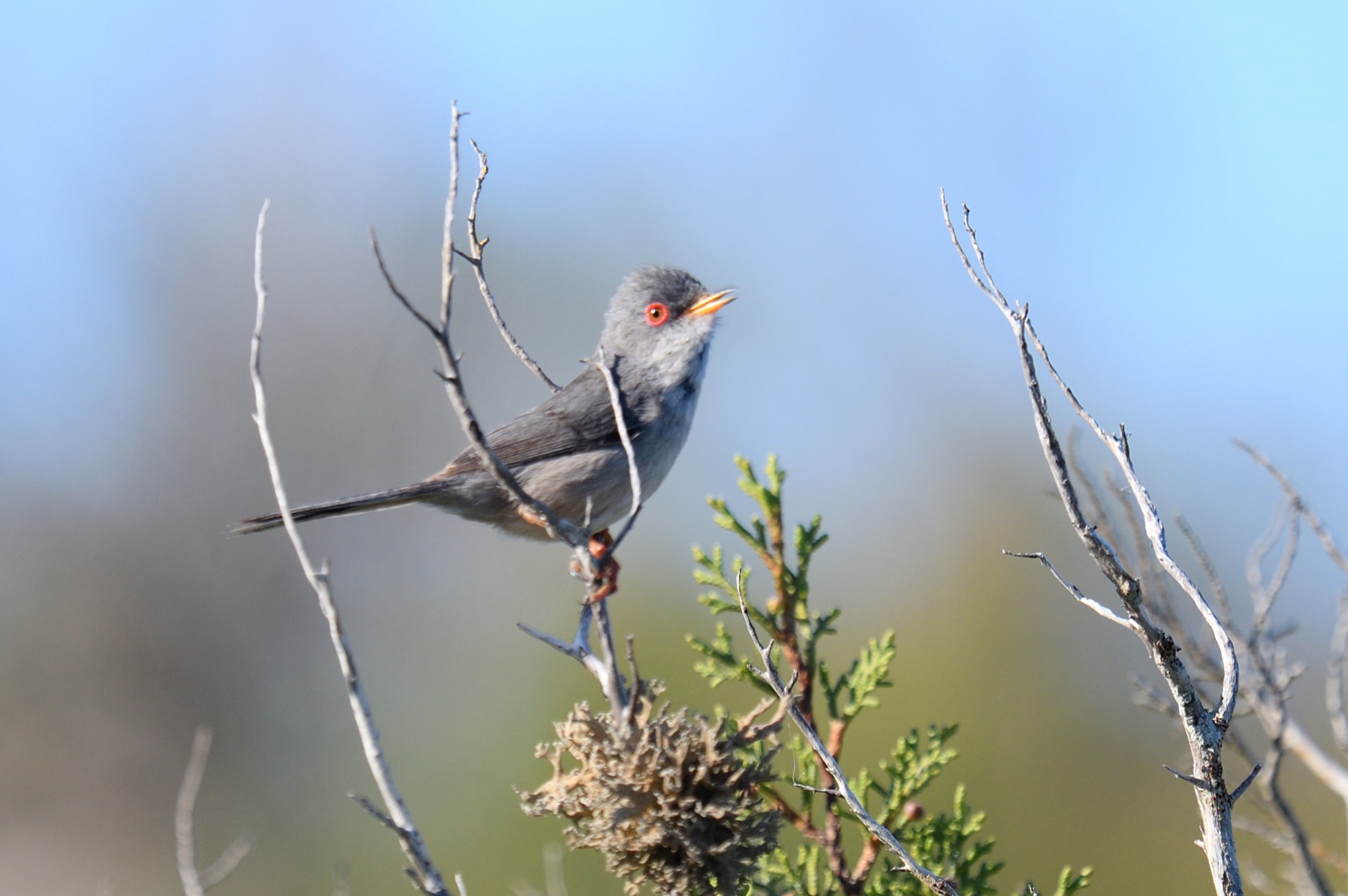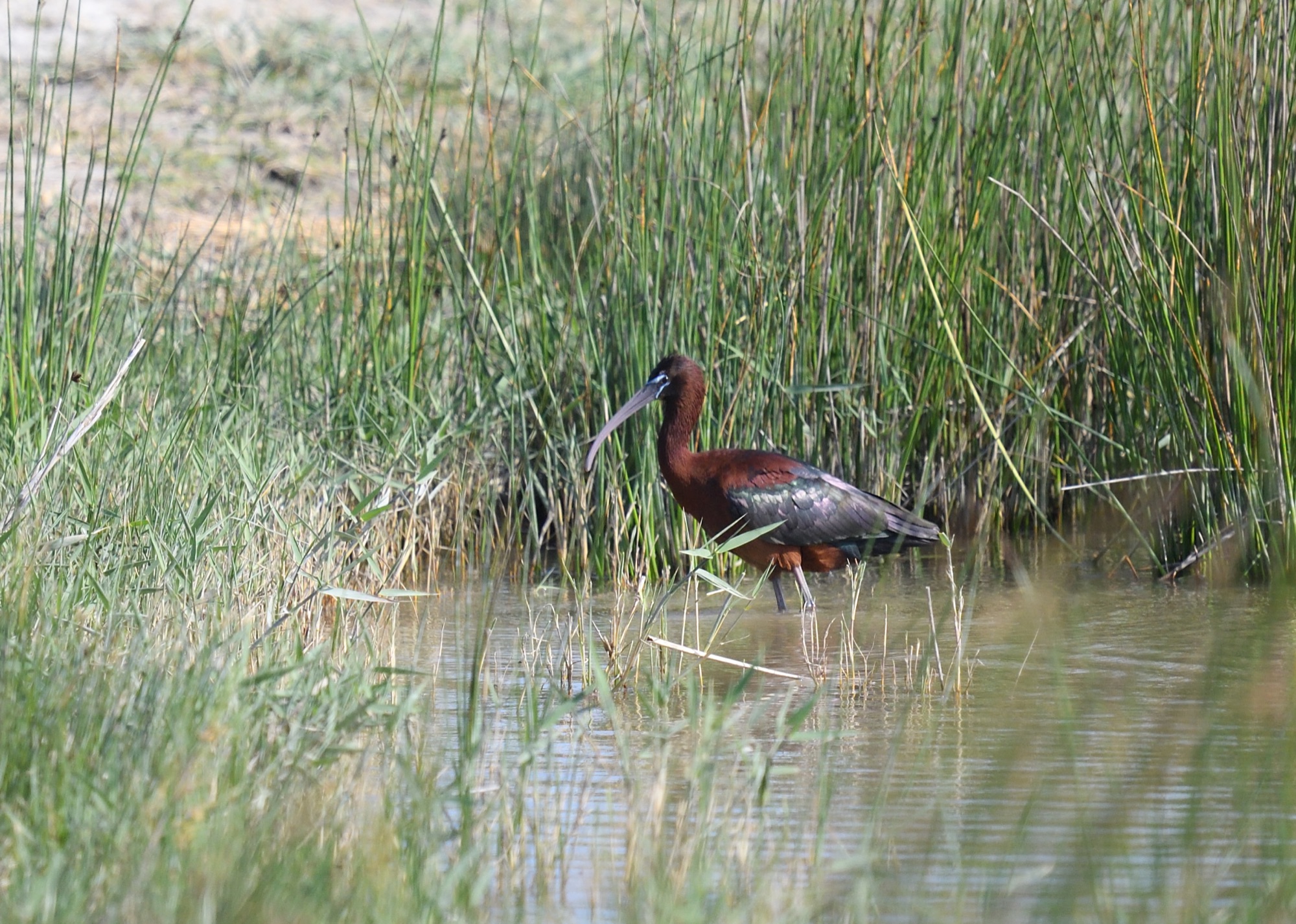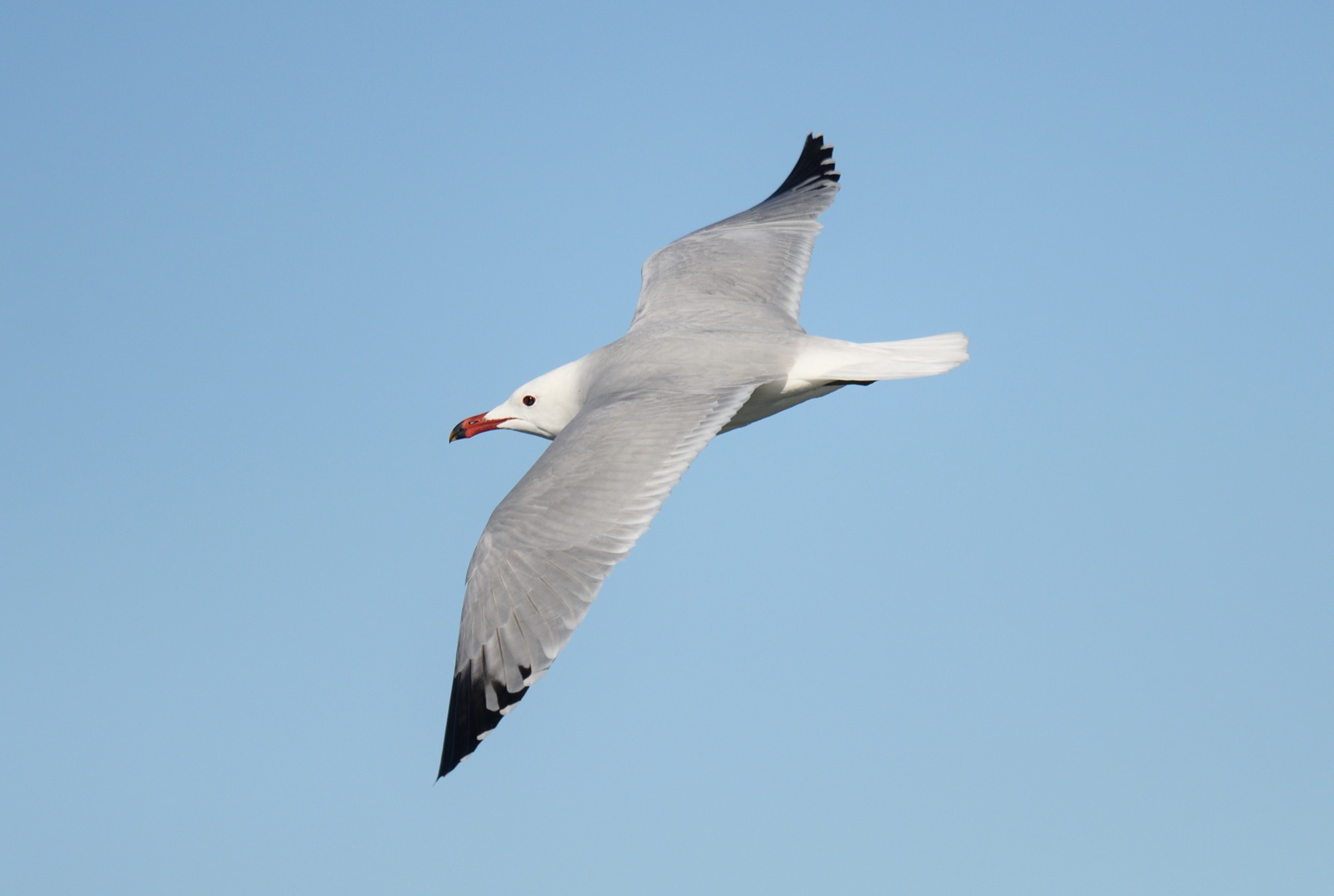BALEARIC SPRING MIGRATION SPECIAL
Day 1 UK - Ibiza - 19th April 2020
Arrivals into Ibiza from one of the many local airports across the UK or Europe. We will meet you upon arrival and then it's just a short 20 minute drive to our wonderful accommodation for our stay on Ibiza - Villa Rosa. This contemporary house is set in wonderful gardens with a fantastic pool, the house has 6 bedrooms, is full of light and sunny space with hotel-style design and luxury in every room. The main living space is hugely impressive with 3 sets of patio doors & windows, and there's a fine dining table inside and out where we can enjoy our meals. And its just a short drive of a few minutes to nearby restaurants if we decide to eat out. Depending on arrival times we will hopefully be able to take a walk in the surrounding fields where we can get outstandingly great views of Firecrests, as well as the recently split Mediterranean Flycatcher, Eurasuan Stone-Curlew and others, or spend some time photographing and watching stunning Audouin's Gulls. If time permits, there's also a chance of a seawatch at a nearby headland where Scopoli's and Balearic Shearwaters sometimes congregate before heading out into the Mediterranean Sea to feed. Night in Ibiza.
Days 2 - 4 Ibiza - Formentera
The focus of our time on Ibiza will be to check out the coastal areas for Spring migrants on this relatively underwatched island, with the aim to find some unusual species, all at a relaxed pace, enjoying the scenery and numerous small cafes! Close to our excellent accommodation we can see Booted Eagle, Yellow-legged Gull, Thekla and Greater Short-toed Larks, Zitting Cisticola, Cetti's Warbler and Sardinian Warbler, whilst European Bee-eaters will have mainly moved out but there should still be a few lingering individuals present. Migrants could include Collared Pratincole, Eurasian Wryneck, Red-footed Falcon, Tawny Pipit and others. And we will a special effort to locate the endemic Balearic Warbler, whilst Eleonora's Falcon can often be seen over our villa and Audouin's Gull are present along a nearby beach.
One of the best birding sites in Ibiza is the saltpans and scrub at Las Salinas, and is one of the better spots to try and find Balearic Warbler. Waders should be moving through and all the usual suspects are possible such as Collared Pratincole, Little and Temminck's Stints, Kentish Plovers etc. This area can be a migrant trap and we are hoping for some other good migrants around the scrub and pine trees. Santa Eulalia has Ibiza's only river and could be another migrant trap with Great Reed Warbler, chats, flycatchers and thrushes all moving through at this time of year. A highlight of our time here will be a visit to the small island of Formentera, which is rarely visited at all by birders but could be an excellent migrant spot in the right conditions. We will take a short ferry journey from which Balearic Shearwaters should be seen, and explore this island, taking a packed lunch with us. Back on Ibiza, the 'mountain' of Atalaia is cloaked in pine trees and is a good site for Balearic Crossbill and Firecrest. Cala D'Hort is another good spot for Balearic Warbler, and the views of the small offshore islands where Eleonora's Falcons breed is truly stunning. Nights in Ibiza.
Days 5 - 7 Mallorca - S'Albufera National Park - Cabrera
We have almost 3 full days to explore the wonderful island of Mallorca, visiting the best sites this island has to offer. After a short internal flight we will head to the impressive wetlands of S'Albufera and S'Albufereta.The network of lagoons and pools surrounded by tamarisk scrub and the odd pine tree could well hold some interesting migrants as well as recently arrived breeding species, including the sought-after Moustached Warbler. Other possibilities include Greater Flamingo, Red-crested Pochard, Marbled Duck, Western Swamphen, Red-knobbed Coot, Water Rail, Spotted, Little & Baillon's Crakes, Black-crowned Night-Heron, Purple and Squacco Herons, Little Bittern, Eurasian Bittern, Western Osprey, Western Marsh Harrier, Black-winged Stilt, Eurasian Stone-Curlew, Little and Temminck's Stints, Little Ringed and Kentish Plovers, Curlew Sandpiper, Marsh, Green, Wood, Common Sandpipers, Gull-billed and Whiskered Terns, Woodchat Shrike (nominate form), Savi's and Great Reed Warblers, and hopefully Common Waxbill.
Within short drives of our accommodation there are a number of classic Mallorcan birding sites to visit. One of the first spots we will check out is Cala Boquer, just a few kilometres away, where a relaxed and gentle walk to this small cove is good for Red-legged Partridge, Egyptian Vulture, Black Vulture, Eleonora's Falcon, Eurasian Scops Owl, Eurasian Hoopoe, Eurasian Wryneck, Crag Martin, Blue Rock Thrush, Black-eared Wheatear, Common Redstart, Pied and Mediterranean Flycatchers (this latter species has been reently split from Spotted Flycatcher), Whinchat, Rufous-tailed Rock-Thrush, Western Bonelli's, Sardinian, Subalpine and Balearic Warblers, Balearic Crossbill, and Cirl Bunting. Moving on from here we can visit Formentor Peninsular. This truly spectacular cliffs and headland could well hold migrants and resident species such as Balearic and Scopoli's Shearwaters, Montagu's Harrier, Eleonora's Falcon, Balearic Woodchat Shrike (Badius), Golden Oriole, Pallid Swift, Common Nightingale, hopefully migrating Red-throated Pipit, Spotless Starling, migrating Ortolan and resident Corn Buntings. With the recent increase in records of Pallid Harrier across much of Europe we can always hope for one of these majestic raptors. We should see flocks of Eleonora's Falcons wheeling across the clear blue sky and in the right conditions migrating raptors such as Booted Eagle European Honey Buzzard, Black Kite and Eurasian Marsh Harrier.
We can also visit Cuber Reservoir for Red Kite, possibly a migrant Black Kite, Eurasian Crag Martin, Pallid and Common Swift, and there's also a good chance of Cinereous Vulture.
Cabrera Island is the main island of a small archipelago off Mallorca’s south coast and is home to breeding Moltoni's and Balearic Warblers. We hope to find both species here amidst the Mediterranean maquis scrub, dotted with Buckthorn, Junipers and Olive trees. Potentially this island could be an amazing migrant trap as it is Spain's equivalent of Fair Isle having previously hosted the countries' first Cretzschmar's Bunting and Semi-collared Flycatcher. If the winds are coming form the east one can hope for a true rarity and no doubt our first site to search will be the scrub around the lighthouse near the port. The boat trip of an hour could give us some close ups of Balearic and Scopoli's Shearwaters as well. Nights in Majorca.
Day 8 Majorca - UK - End of Tour - 26th April 2020
Depending on flight times we may be able to check the nearby marshes before transferring to the airport for our return flights to UK and the end of the tour.
